Food bank efficiency
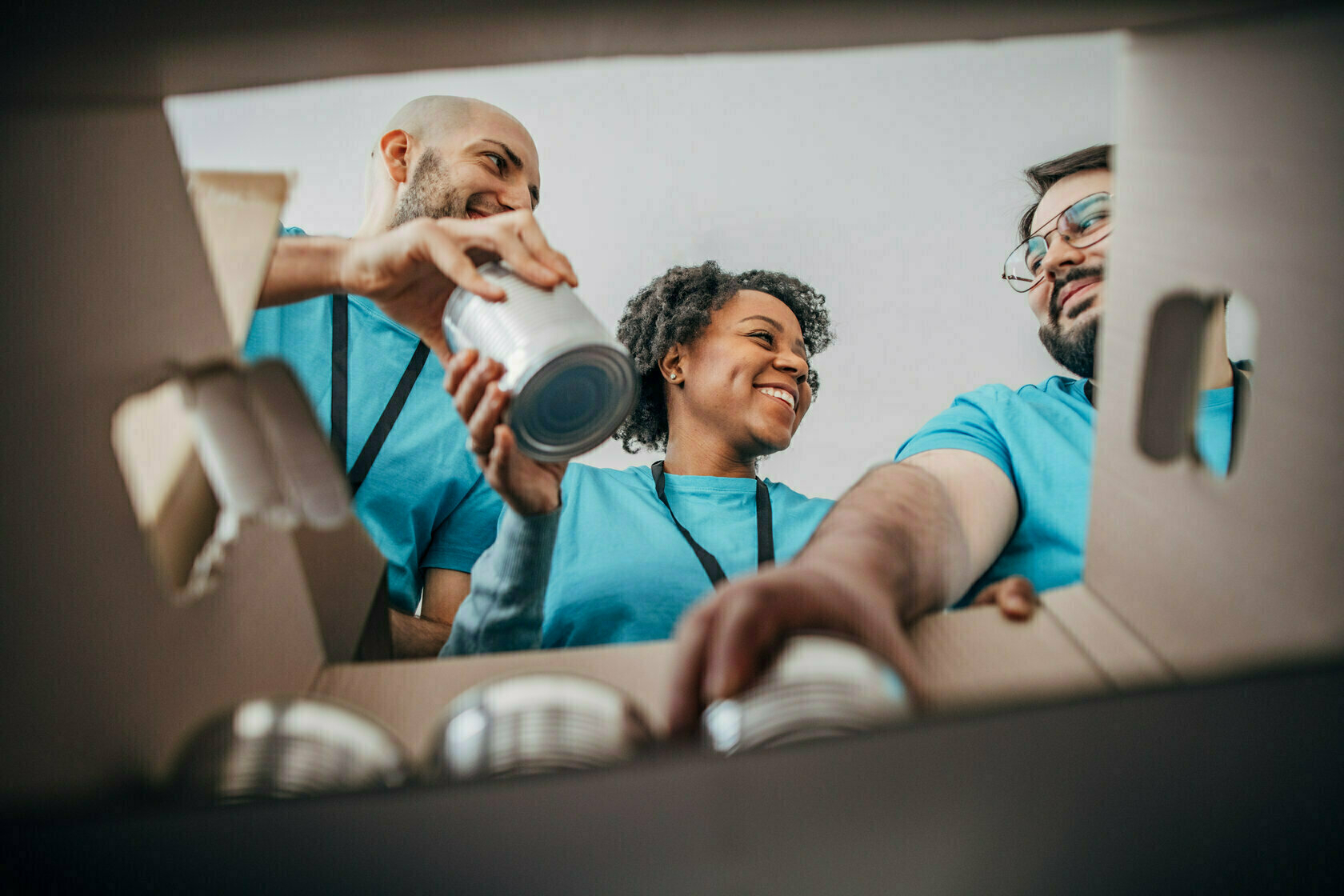
I’ve been at the Thinking Digital conference this week, where local guy Paul McMurray who works for Accenture, was on stage telling us about a website called Donation Genie.
He discovered that food banks often have to stop creating food parcels for hungry families because they’re missing certain items, and so he responded to a company challenge, won, and has continued to develop his creation to integrate with various APIs to improve efficiency, and thus help more people.
Food banks and warm spaces can update their wishlists detailing what they need.
Donation Genie compiles that information, so you know exactly what your community needs right now.
With Donation Genie, you can target your donation to make the biggest impact in your area.
Source: Donation Genie
The 'threat' of fictional and factual fembots

Of all of the things that have launched recently, a breath of fresh air has been 404 Media. This is another article from there, which challenges us to think about recent news from OpenAI ushering a future that is less like the film Her and more like Metropolis.
In 1957, German director Fritz Lang introduced the world to the first on-screen fembot with his adaptation of his wife Thea von Harbou’s frenetic urban dystopia novel Metropolis. The character of the Maschinenmensch, a robot woman created by a mad scientist to replicate his dead lover (a deepfake, basically) hypnotizes the effete bourgeois with a dance. The men pant and pull their hair and scream, “For her, all seven deadly sins!”
Before Metropolis, automatons were seen as entertaining, odd tinkerings of inventors and the wealthy. Their history goes back to ancient Greece, through the Middle Ages and into the 18th century. Until that point, machine-men and women were fairly evenly represented (plus a lot of little robot animals). But in the 19th century, with the arrival of the industrial revolution, something changed. People became afraid of the progress happening around them, and feared mass unemployment thanks to these new factories and machines that separated workers from the products of their own labor.
That’s when depictions of the android as female started to take over. When machines started to be seen as a threat to male control, something to be feared and never to be fully understood, they were imagined as seductive pariahs, the original black box. The Maschinenmensch is burned at the stake.
“Fictional and factual fembots each reflect the same regressive male fantasies: sexual outlets and the promise of emotional validation and companionship,” researchers Kate Devlin and Olivia Belton wrote in their 2020 paper. “Underpinning this are masculine anxieties regarding powerful women, as well as the fear of technology exceeding our capacities and escaping our control.” Everyone is fixated on the flirtatious female voice because deep down, under the jokes about e-girls being “so over” and AI girlfriends as responsible for declining birth rates, people are actually, seriously afraid.
Source: 404 Media
An end to growth?
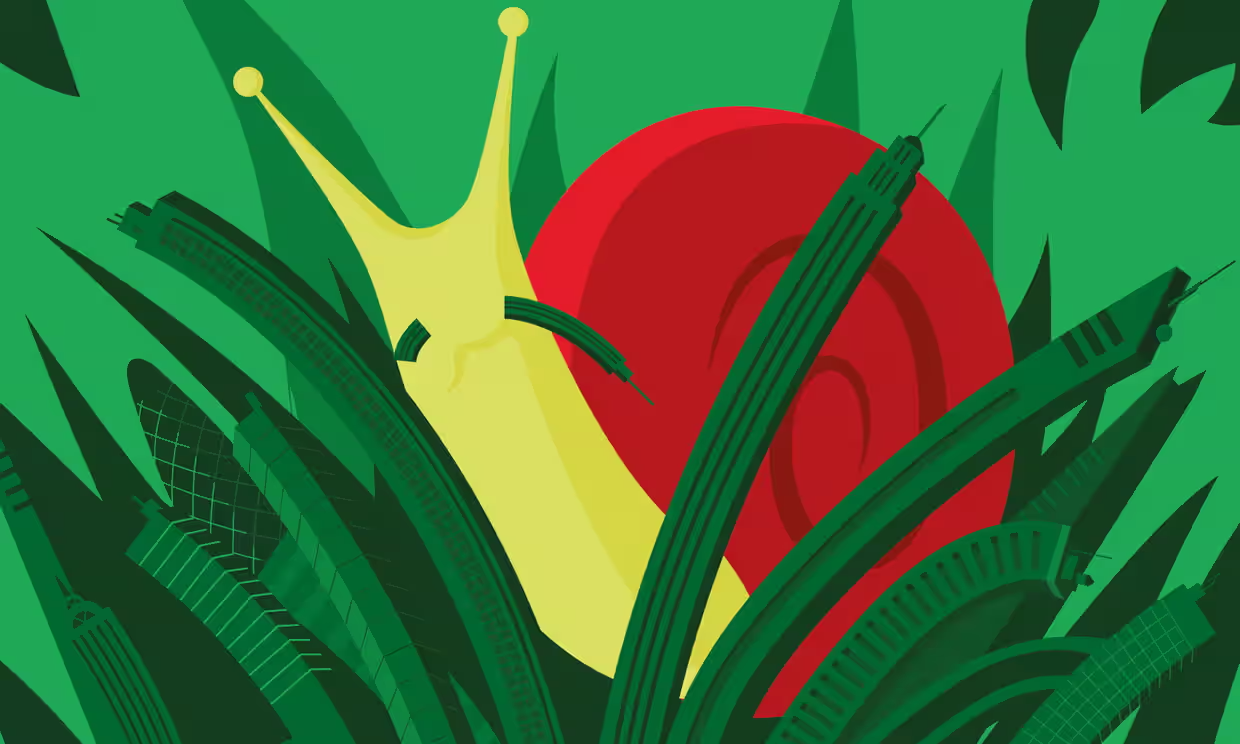
Kate Raworth, who came up with the idea of Doughnut Economics, writes in The Guardian about how we need to move beyond the idea of endless growth. This goes beyond alternatives to GDP such as the Human Development Index (HDI) to take into account of environmental factors.
Instead of pursuing endless growth, it is time to pursue wellbeing for all people as part of a thriving world, with policymaking that is designed in the service of this goal. This results in a very different conception of progress: in the place of endless growth we seek a dynamic balance, one that aims to meet the essential needs of every person while protecting the life-supporting systems of our planetary home. And since we are the inheritors of economies that need to grow, whether or not they make us thrive, a critical challenge in high-income countries is to create economies that enable us to thrive, whether or not they grow.
[…]
When we turn away from growth as the goal, we can focus directly on asking what it would take to deliver social and ecological wellbeing, through an economy that is regenerative and distributive by design. There are many possibilities – such as driving a low-carbon, zero-waste industrial transformation, with a green jobs guarantee, alongside free public transport, personal carbon allowances, and progressive wealth taxes. Policies like these were, only a decade ago, considered too radical to be realistic. Today they look nothing less than essential.
Source: The Guardian
License to Drill
The older I get, the more different kinds of workouts (or drills) I need to do to keep supple and fit. This ‘James Bond’ workout could be useful, although I’m pretty sure the suit, fun, and martini are optional…
From the James Bond novels, we know that 007 liked to do all sorts of physical activities that could count as exercise: boxing, judo, swimming, and skiing. He was also a golfer, so he got some activity in that way.
[…]
In [From Russia With Love] (one of the 5 best books in the Bond canon), Fleming describes a short calisthenics routine that his secret agent does that’s capped off with a “James Bond shower.”
Source: The Art of Manliness
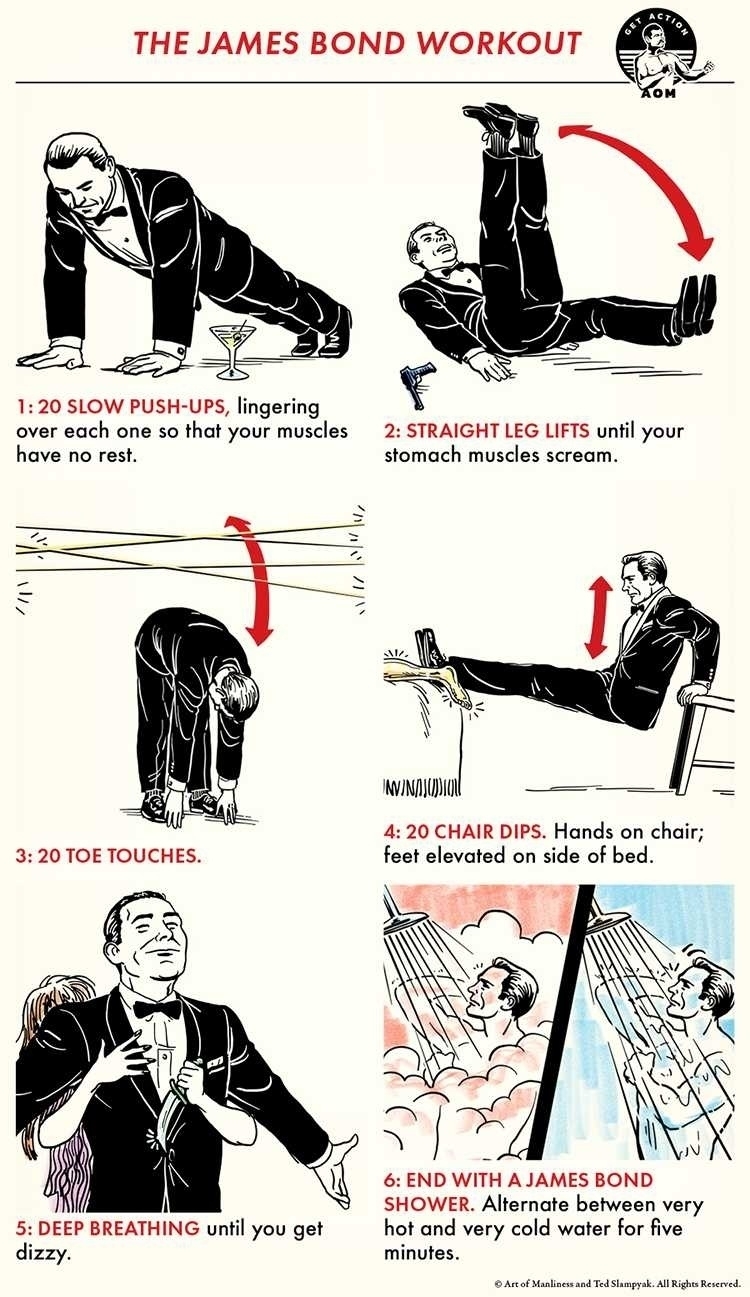
Navigating financial uncertainty isn't just about 'trying harder'

When you’re a freelancer, consultant, or part of an organisation that relies on contracts or funding from third parties, you get used to financial peaks and troughs. This year, so far, though has been flat. Worryingly flat. I’ve never seen so many Open To Work badges on LinkedIn. I’ve even put up the bat signal.
In this post, Rachel Coldicutt shares some worrying news about organisations in the UK’s social sector — including her own. I don’t know what’s going on, to be honest. Putting on my tinfoil hat would suggest various conspiracy theories, whereas donning my systems thinking hat would suggest a confluence of factors including Brexit, pre-election concerns, experimentation with AI, etc.
Anyway, if you need some help at the intersection of learning, technology, and community, I’m here to help! My organisation, WAO has worked with organisations such as Greenpeace, MIT, and Sport England. We’ve got lots of openly-licensed resources which we can use for consulting or workshops, and we’ve also got experience in running impactful programmes. Let’s have a chat.
“It’s a very British mentality at times of: everything’s bad, don’t expect better for yourself, just get on with your life until you’re dead.”
Another “British mentality” is that most people don’t like to talk about money. Not having it is seen as a failure, asking for it is unimaginably crass. You’re just, somehow, supposed to have it.
[…]
This year should be one of pump priming and relationship building, a time of new beginnings and opportunities. The changes many of us want to see certainly won’t happen quickly, but if we don’t collectively make an effort to share ideas, tell stories, show what’s possible - well, they won’t happen at all. This is a good time to get ready, to rebuild networks and ideas, to make things happen and create the conditions needed for change.
It’s hard to imagine a better future and build alternatives when you’re worrying about the bills.
[…]
From conversations I’m having, it feels like we’ve collectively reached a pretty urgent financial impasse and if we don’t break it, many more organisations will find they have to close this year.
[…]
Usually, organisations like mine - who take on a mix of projects from the small (£15-30k) to the medium (£50-85k) to the large (£150k+) – would get a little financial bump in March and April. We’re just small enough to benefit from the flurry of year-end underspends, and big enough to take part in the proposals and procurement rounds that usually begin with the new financial year. By the end of April, any short- and medium-term gaps in the pipeline have usually been filled.
That hasn’t happened this year. And it’s not just us, everyone I speak with is experiencing the same thing.
Source: Just Enough Internet
Every drama requires a fool

Some of these are perhaps a bit too literal for their own good, but this list of Chinese proverbs includes some I hadn’t seen/heard before. But then, I guess, lots of things are dubbed ‘Chinese proverbs’ that are of unknown provenance.
Here’s three of my favourites that I hadn’t come across before:
If you fall down by yourself, get up by yourself.
Every drama requires a fool.
Smart people also do stupid things.
Source: Futility Closet
Image: Henry & Co.
Another chance tonight

It’s looking like we might get another chance to see the aurora borealis tonight after the spectacular display in most places, including near us.
I thought this xkcd chart was funny/interesting given how underwhelmed I’ve been going to see things like the meridian line in Greenwich, London.
Source: xkcd
More on digital afterlife services

If there are people falling in love with chatbots powered by generative AI, you can bet there are people creating chatbots of deceased loved ones. I can understand the temptation, but I can’t see it being a particularly healthy one. And as this article points out, the vectors for disintformation and manipulation is immense.
Known as “deadbots” or “griefbots,” these AI clones are trained on data about the deceased. They then provide simulated interactions with virtual recreations of the departed.
This “postmortem presence” can social and psychological harm, according to researchers from Cambridge University.
Their new study highlights several risks. One involves the use of deadbots for advertising. By mimicking lost loved ones, deadbots could manipulate their vulnerable survivors into buying products.
Another concern addresses therapeutic applications. The researchers fear that these will create an “overwhelming emotional weight.” This could intensify the grieving process into endless virtual interactions.
Source: The Next Web
We got the internet that reflects who we are

John Willshire, with whom I had an interesting chat this week, asked a question of Mike Monteiro. I confess not to follow the latter’s work, but liked his thoughtful and considered answer to John’s question: Which internet do you wish we’d ended up with instead of the one we got?
This is the most pertinent part of it, as far as I’m concerned:
Ultimately, I think we got the internet that reflects who we are.
We got an internet where a select few people have a lot of control because they have money. We got an internet where loud angry racists demand a lot of attention because they believe they deserve that attention. But we also got an internet where kids manage to connect with one another. We got an internet where trans kids can get make-up tutorials. We got an internet where the horrors of a genocide can be exposed, as much as the powers-that-be try to stifle that from happening. We got an internet where Kendrick can go ham. We got an internet that reflects both the horror and the beauty of who we are as human beings.
We got the internet that reflects who we are.
Do I want a better internet? Sure. I mean, I’m on it right now. I’d enjoy it more if it wasn’t full of terfs and nazis. But the path to a better internet starts with building a better society. Which starts by redefining what we mean when we say we.
Source: Mike Monteiro’s Good News
ShareOpenly (to the Fediverse)

Ben Werdmuller created ShareOpenly to make it easier to share web content, such as blog posts, to the newer crop of social media sites. Happily, he’s announced that there’s now a nifty icon and a WordPress plugin. I’ve installed the latter over at my personal blog.
In related news, publishing platform Ghost has started work on their ActivityPub integration. This is the protocol that allows social media sites such as Mastodon, Pixelfed, and Micro.blog (which powers this blog) to talk to one another.
ShareOpenlyIt’s been a little over a month since I launched ShareOpenly, my simple tool that lets you add a “share to social media” button to your website which is compatible with the fediverse, Bluesky, Threads, and all of today’s crop of social media sites.
You might recall that I built it in order to help people move away from their “share to Twitter” buttons that they’ve been hosting for years. Those buttons made sense from 2006-2022 — but not so much in a world where engagement on Twitter/X is falling, and a new world of social media is emerging.
Source: werd.io
Strategic Design resources

I had a chat with John Willshire today from Smithery and while we were talking he mentioned a few resources and books:
- Discursive Design: Critical, Speculative, and Alternative Things by Bruce M. Tharp and Stephanie M. Tharp
- Futures Literacy
- Transforming the Future: Anticipation in the 21st Century edited by Riel Miller
- Dark Matter and Trojan Horses: A Strategic Design Vocabulary by Dan Hill
- Systemic Design Framework by The Design Council
Cullernose Point

I’ve got too much art waiting to go up in my new house to be buying more at the moment, but I’m very tempted by these exquisite wood engraving prints from emeritus professor John Altringham, an ecologist and conservation scientist.
In particular, the one I’ve featured for this post is of a place in my home county of Northumberland that I’ve never visited: Cullernose Point. It also has given me some ideas for some mountain expeditions, something that I really need in my life at the moment.
Source: John Altringham
Systems ambiguity and chaos

Silvio Lorusso’s ‘intervention’ during Domus Academy’s roundtable is well worth a read. He talks about the need to, in some ways fight complexity as more of a cultural practice than a practical framework. How useful is it, he wonders, to point to something as ‘complex’? Is it mostly of help to professionals seeking to assert authority and control?
Disciplines are arbitrary compartments of knowledge: they strategically define their boundaries in order to demarcate some particular problems and solve them, or at least address them. Sociology, for example, was born in the early 19th century to address the problem (and, therefore, problems) of society. However, disciplines won’t meekly confine themselves within their artificial boundary; rather, their internal discourse will push the border, extending it. This tendency is especially evident in the design field, where you often hear that “everything is design”.
Besides the physiological swelling of the disciplines, we witness a phenomenon which is historically specific. Martin Oppenheimer (quoted by philosopher Donald Schön) called it a “proletarianization of the professions”. When everyone can call themselves a professional, the reputational and financial returns of being one shrink. Furthermore, there is a tangible distrust toward the figure of the expert. Just think of the field of economy or virology…
So, what do professionals do to regain prestige? They accelerate the expansion of the disciplinary confines, creating connections in an almost conspiratorial, apophenic mode. Carlo Bramanti, who is currently working on the notion of “conspiratorial design”, points out not only the visual but also the conceptual similarities between diagrams made by legitimized design figures like Victor Papanek and paranoid-style infographics about “Covid 5G” by an obscure graphic artist named Dylan Louis Monroe. What do they have a in common? They want to produce and project a sense of control on the messiness of the world (Richard Hofstadter: “the paranoid mentality is far more coherent than the real world, since it leaves no room for mistakes, failures, or ambiguities”). How do they do so? By means of hypertrophy: by adding always more relations to their system, which becomes a totalizing one: it becomes the system.
This is why complexity is ultimately a reassuring category. Reassuring to whom? To the professionals, who are there to explain and clarify it, to seal it with “the authoritative stain of scientific enquiry”, as Georgina Voss puts it. And there is a further paradox. Do you remember the Game of Thrones “It’s not that simple” meme? Well, to reassure themselves, experts will have an incentive to expand their system of reference, and therefore create more links and relationships. This leads to the ever-increasingly intricate diagrams, to what Voss calls “the airport-bookshop model of systems thinking which tends to involve a lot of graphs and urges to ‘shift your mindset’”. But by adding links and relationships one doesn’t necessarily reach galaxy brain level. More likely they will just generate more confusion, more noise, more chaos.
Source: Entreprecariat
Image: Bucky’s Nightmare by Mathieu Lehanneur.
But here we are: the diaspora of online communities
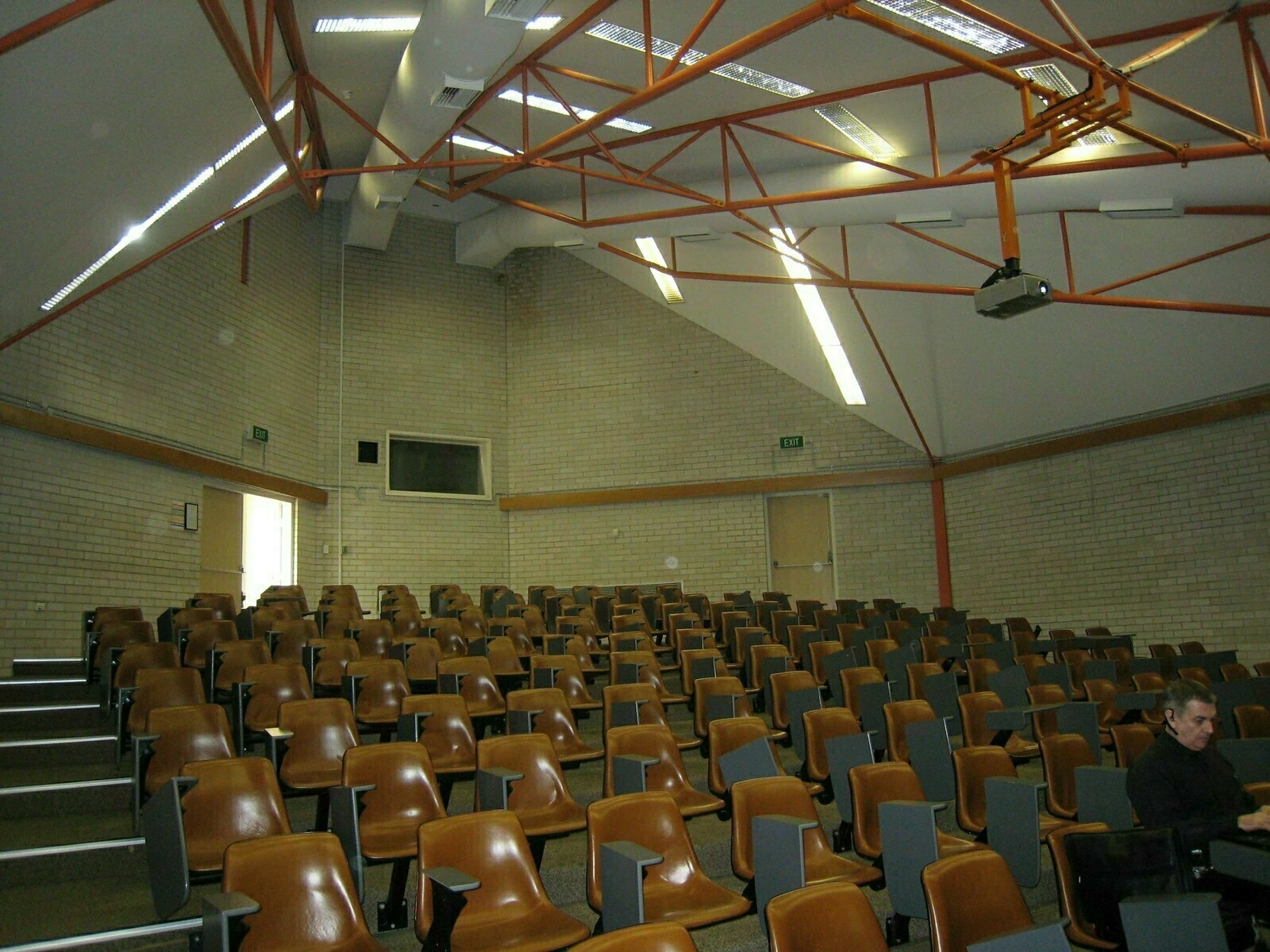
Laura often says that online communities don’t exist on a single platform, but all over the web. They might seem to have a ‘home’ in one place, but conversations and hashtags to gather around are distributed.
Twitter, says Alan Levine, was an anomaly in that regard. It felt like a ‘public square’ even though it was owned by a private company. As I said a decade ago, ‘software with shareholders’ is a problem. Something to avoid.
Now, I spend most of my social time on the Fediverse, but it’s not a place where I talk much about my professional work. That seems to have moved to LinkedIn, more from necessity than choice. It’s not a great state of affairs; I wish it were different. But here we are.
There is a myth. Cue the string section.
That there was once a place for all to gather, share, be festive, develop new connections, every course a hashtag, topple a few governments, people power.
Then came an evil billionaire who ruined it all, those who gathered were cast out, a diaspora.
No end.
Yes the Musky One was/is a horrible scourge, but all he did was hasten a decline. The birdhouse he bought was already uwinding in the mid 2010s with more algorithim cruft, more ads, more malfeasents. In my 2016 year end post, having been one of the world’s stupefied witness to the script of a reaility show election right out of the Black Mirror
[…]
It’s too simple, too convenient to scapegoat it all on that smelly tyrant, the reason for the dispersion is we dispersed. And it’s not a platform thing, it’s that thing in our hands.
Source: CogDogBlog
"All that any honest review actually does is just accelerate whatever was already going on"
This is a masterpiece in defending yourself while taking the high ground and explaining to your audience what it is that you actually do. Brownlee is an amazing communicator and there’s a reason why he’s got one of the most-watched YouTube channels.
Warm Data
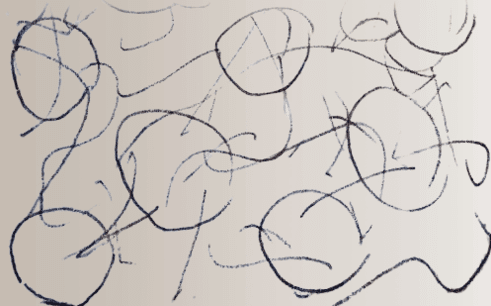
Amy Daniels-Moehle shared a link to this during the ORE community call yesterday. She’s been doing some kind of intensive course with the International Bateson Institute and mentioned the concept of ‘warm data’.
Nora Bateson explains the origin and need for warm data in this short video. It’s definitely something I need to explore further, perhaps as part of my studies towards a MSc in Systems Thinking.
The International Bateson Institute exists to generate and give access to information that offers a wider vision. The focus of inquiry is on the interrelational processes between and among systems. It can involve recognising how patterns repeat and reflect each other among multiple contexts and across multiple systems – many of these systems’maintenance and renewal is critical in the coming decades.
The underlying premise of the IBI is to address and experiment with how we perceive. Our work is to look in other ways so that we might find other species of information and new patterns of connection not visible though current methodologies.
We call this information “Warm Data”.
Spectacular timelapse over the ALMA Observatory
This timelapse, which was shared by the social media account Wonder of Science is just fantastic. It’s a timelapse capturing an entire night from sunset to sunrise over the ALMA Observatory on the Chajnantor Plateau in the Chilean Atacama Desert by Christoph Malin.
More information on the European Southern Observatory website.
How to easily generate image descriptions and alt text
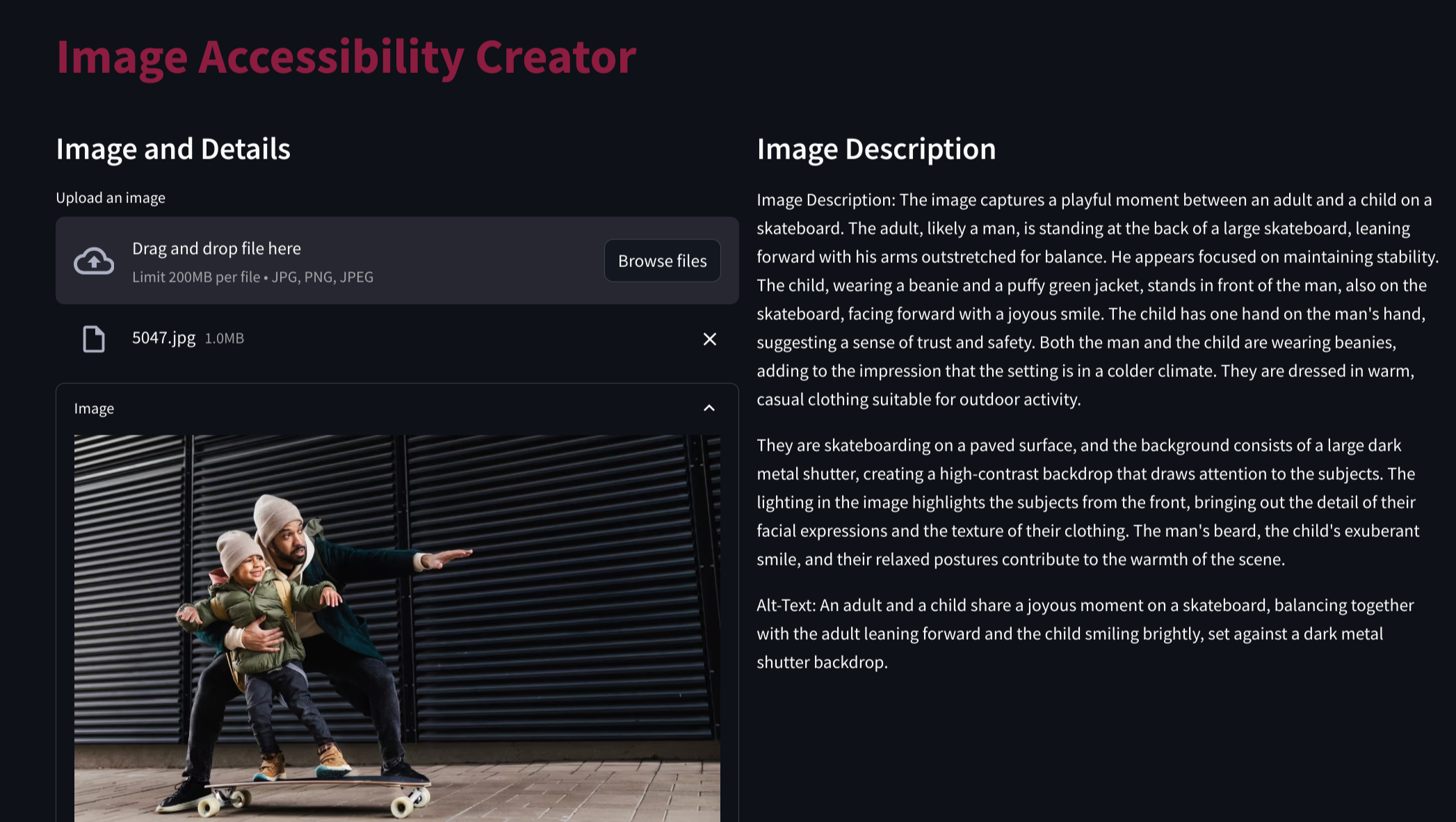
This is pretty great: you upload the image and it creates a pretty detailed text description, along with more concise alt text. I’ve previously been using GPT-4 for this, but this is more focused and useful.
Source: Arizona State University
It turns out the apple can fall pretty far from the tree

How much influence do parents have on their children? Less than we’d assume, it appears.
I have to say, much to my shame, that it’s taken me a long time to realise how different my own kids are to me. This shouldn’t be a surprise, as I’m quite different from my own parents. Although, of course, there are some pretty huge overlaps in our interests, but that’s to be expected, given how much time we’ve spent together.
[P]sychologists have known for ages that parents and children don’t particularly share the “big five” personality traits (extroversion, agreeableness, openness, conscientiousness and neuroticism). It is getting attention now because of a study that tried to change the way this question of family similarity is explored. Rather than participants only self-reporting their personality traits, they also chose a third party who knew them well to assess them.
This novel approach suggested more similarity between parents and offspring – approximately 40% rather than the 25% of previous studies. But that is still very low. The study concluded that it was “impossible to accurately predict a child’s personality traits from those of their mother or father” and that most relatives are not “much more similar than strangers”.
Huh. So it’s just our pattern-seeking brains that make us think little Timmy is “cheeky like his dad”; you might as well say he is “cheeky like that gull”. As a parent, this felt like a weight lifted: if my kids are like me (God help them), it’s not my fault – just dumb luck. The same study’s findings on the impact of home environment felt good, too: “Growing up together does not make people more similar.”
[…]
But parents aren’t entirely off the hook. Last year, a study of 9,400 11- to 17-year-olds declared: “Parent personalities have a significant impact on a child’s life.” The detailed results concluded: “Kids with neurotic parents scored relatively low on several measures, including grades, overall health, body mass index … and time spent on leisure activities.” (Sorry, kids, but it’s not just me and my fellow neurotics getting guilted: extroverts’ offspring also get worse grades.)
It would be bizarre if the people who raised us had no influence on how we turned out, but surely we will never understand with any clarity how our parents screw us up and how we screw up our kids in turn. There are too many variables; how could you ever work out what makes us who we are, what is innate and what isn’t? As one psychologist has put it, the most direct way to weigh nature against nurture is “to randomly assign children to parents”.
Source: The Guardian
Limiting virtues
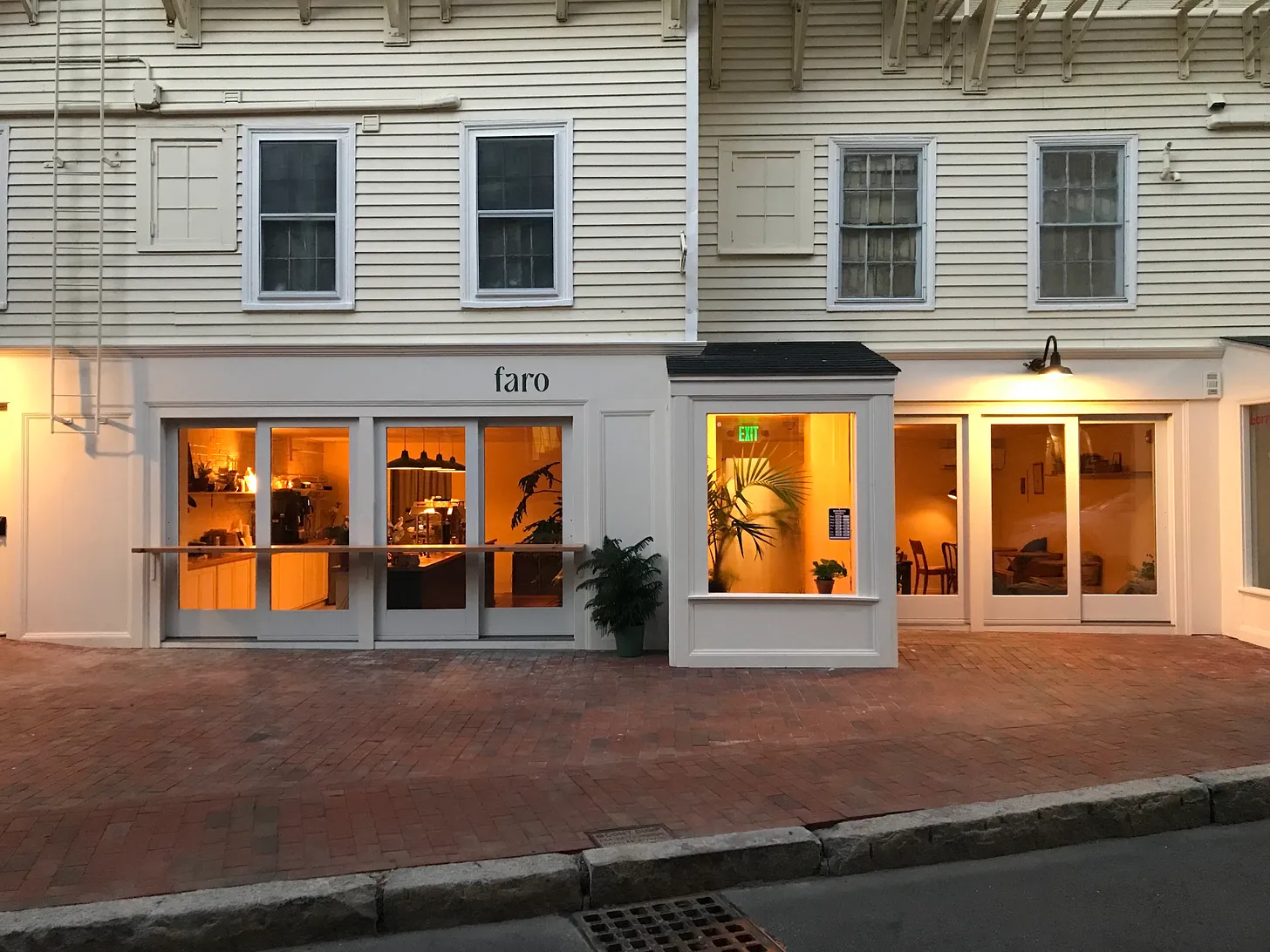
Sara Hendren discusses what I would call ‘creative constraints’ as applied to organisational policies. For example, a coffee shop she knows that has a no-laptops policy which is “gently, but strictly, enforced” changes the vibe:
A no-laptops policy means you can’t get a certain kind of work done, but it does mean everyone present will be a little more eyes-up-and-talking, or maybe absorbed by a book or notebook. The activities will be at the speed of the body, one to another. Is it nostalgic and precious? Maybe. But it’s not the only café in town to make this move, and I think there’s some signal there. Faro started out with no-laptops only on weekends, and the policy was welcome enough to make it a daily norm. Over at Zuzu’s Petals, it’s no devices of any kind.
Source: undefended / undefeated